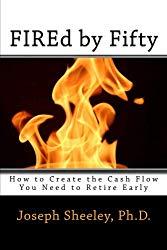In 1993, I had bought the first two shares of Ferris Productions, representing two percent of the company. This was later to become Virtra Systems and then just VirTra. By 2018 I had been through a merger that took the company public on the NASDAQ pink sheets, wild swings as the thinly traded company would jump 200% in a day then spend the next week or two settling back down to previous lows, the untimely departure of the CEO and some of his staff, and a gut-wrenching collapse down to below the point where I had bought the shares originally during the 2008 housing market blow-up.
Things were calmer by 2018 than they had been in the past. The company had changed their product line, going from selling virtual reality systems that largely depended on headsets to shooter-awareness training systems that were projected on screens. The new products were starting to revolutionize law enforcement and military training, allowing scenarios where the trainees could use their own weapons, modified with a CO2 cartridge that would simulate recoil, and scenarios with up to a 270-degree view where threats could come from in front, to the side, or even behind the participants. Possibly the biggest innovation that the company made was the ThreatFire Belt, where the trainer could shock the participants with a painful electric jolt if they were shot in the scenario. This added the bit of adrenaline individuals would experience in a real situation that can cloud judgment. The system was a hit and is probably the best product out there.
(This is part 7 of the story. To find part one, go here.)
(Note, if you click on a link in this post and buy something from Amazon (even if you buy something different from where the link takes you), The Small Investor will receive a small commission from your purchase. This costs you nothing extra and is the way that we at The Small Investor are repaid for our hard work, bringing you this great content. It is a win-win for both of us since it keeps great advice coming to you (for free) and helps put food on the table for us. If you don’t want to buy something from Amazon or buy a book, how about at least telling your friends and family about our website as a great place to learn about investing and personal finance. Thanks!
The company had also started to hire individuals who were experienced in marketing to law enforcement and the military. Soon the company was quietly making sales all over the world. While the stock price might still jump a bit when a new sale was made, for the most part, it just started a more steady climb. They were becoming a real company.
(Check out my new book on how to supercharge your finances, FIREd by Fifty: How to Create the Cash Flow You Need to Retire Early

Between 1999 when the company first went public and 2018 the value of my investment on paper remained about the same, minus some rapid climbs and equally rapid falls. I had picked up more shares when the stock was trading in the 4 and 5 cent range, just because they were so cheap and I thought it was worth it to risk a few thousand dollars more at such low prices. A few times I needed to write an email to my brokerage house assuring them that I understood the risk I was taking since I was buying even more shares of a penny-stock company that already dominated my taxable portfolio. I was putting plenty into my 401k and IRA, however, and I didn’t really consider most of my position “real” money since there was no way I could sell the shares and get anywhere near what the latest market price was. Only a few thousand shares were trading each day and I had several hundred thousand shares.
Something had fundamentally changed, however, between 1999 and 2018. While the share price was the same, the company itself had gotten out of debt and was making enough in earnings to justify their share price. In fact, the company was cheap, with a PE around 10 when one near 15 or 20 would be justified, given sales and earnings growth. (To learn how to determine the value of a company, Benjamin Grahams book,
The Intelligent Investor: The Definitive Book on Value Investing. A Book of Practical Counsel
Having gotten the business on solid footing, the company started to make the shares more attractive to investors. The first thing they did was to do a 1-for-10 reverse split and then a 1-for-2 reverse split. This brought the share price from around 25 cents to around $5 per share. This allowed them to list the shares on the regular NASDAQ exchange. It also opened up the company to investment from various mutual funds and others who would not touch a stock in the sub-dollar range. The stock actually moved up to about $6.50 per share after the reverse split, but then settled down into the $4.50 to $5.50 per share range.
(Want to learn how to start investing yourself? Check out SmallIvy Book of Investing: Book 1: Investing to Become Wealthy where I lay out all of the info needed to understand different types of investments, manage risk, and even ways to generate the money you need to invest.)

One day I came home from work and my wife excitedly asked if I had seen the email. Apparently, my friend had written to say that the company would be ringing the opening bell on the NASDAQ in a couple of weeks and wanted to know if I would be able to make the trip to New York City and participate. Normally I’m not the kind of person who takes trips on the spur of the moment, but given that this was a once-in-a-lifetime sort of thing, I booked airline tickets for my wife and I, found a hotel near Times Square, and made arrangements with my wife’s parents to have the kids stay with them. (Making your own trip to the Big Apple? Check out DK Eyewitness Travel Guide New York City
This would be my second time in New York City and my wife’s first. During the first one, I was with a city-wide youth orchestra and we were invited to play a concert in Carnegie Hall. I guess it takes a lot get me to NYC! I told my boss I needed to take a few days off because I was ringing the bell to open the NASDAQ (yeah, right), packed up, and we headed out early one Sunday morning.
To Be Continued….
To see the final post int he series and see how it all ended, click here.
Have a burning investing question you’d like answered? Please send to [email protected] or leave in a comment.
Follow on Twitter to get news about new articles. @SmallIvy_SI
Disclaimer: This blog is not meant to give financial planning or tax advice. It gives general information on investment strategy, picking stocks, and generally managing money to build wealth. It is not a solicitation to buy or sell stocks or any security. Financial planning advice should be sought from a certified financial planner, which the author is not. Tax advice should be sought from a CPA. All investments involve risk and the reader as urged to consider risks carefully and seek the advice of experts if needed before investing.
